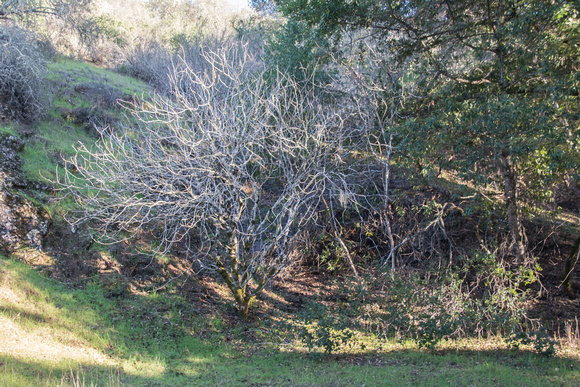California Buckeye Tree (Aesculus californica)
There were many buckeyes beneath this tree as well. If all of them turned into trees, we would be out of space in one year! California buckeyes are an anachronism. They probably co-evolved with Pleistocene megafauna, such as the local camel; these large browsing animals were able to transport the large buckeye seeds to new locations. By the end of the Pleistocene, 10,000 or more years ago, the camels, mastadons, and other megafauna died off. {Note that this might have been approximately when humans appeared locally. But grizzly bears lasted locally until about 1880, co-existing with native Americans and Spaniards, but not gold-seeking, sawmill-building US Americans.} Today, the California buckeye trees remain, even though the conditions under which they evolved have disappeared: there is no animal to spread their seeds. The seeds can roll down the hill, but are seldom carried to the top of the next hill -- except by humans. Off Road C, near the previous tree.


